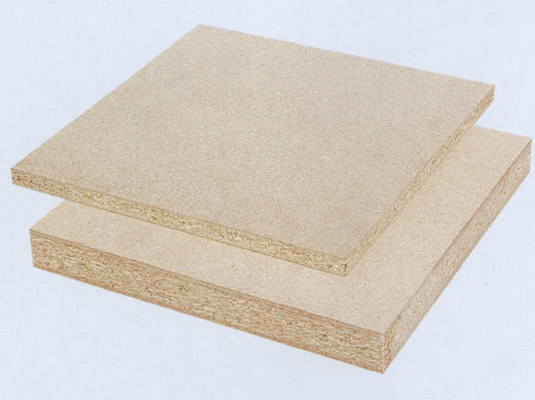Chipboard is used in many different ways, including panels, shelving and flooring, but have you ever wondered how this lumber product is made?
This type of building material is made by compressing small pieces of wood together with glue. One of the biggest environmental advantages of chipboard is that it is made with pieces of wood which would have otherwise been discarded, which means that fewer trees need to be cut down. It is commonly used in applications which do not require a higher grade of lumber.
Constructed From Forest Leftovers
Whenever a forest is cut or thinned, there will always be a great amount of sawdust and small pieces of wood which are left over. These small bits of tree debris are not useful for anything else, but they can be granulated into wood chips and then mixed together.
The mixture will then be combined with some chemical binders such as formaldehyde or urea (or less toxic substances in some cases). It will be treated and pressed with high heat and extreme amounts of pressure which will remove all of the liquid from the mixture and fuse the wood chips together into panels.
If the chipboard is exposed to water it will soak up all of the moisture and break apart, which is why it is usually only used for indoor purposes.
Different Levels of Density
Chipboard is usually made with different levels of density, depending on how it will be used. The normal density of the product is soft, which means that it cannot be used in any circumstances which require a strong material. However, it is possible to manufacture higher density chipboard which will be stronger and firmer and can take more stress. Stronger chipboard is made with larger interior chips and some very strong chipboard is even tough enough to be used for flooring.
The Finishing Steps
After the chipboard has been fused together, it is usually decorated with laminate or film which will hide the surface irregularities. However, it is important to remember never to paint your chipboard with water-based paint as the water can seem into the wood fibres and cause the material to warm and expand. Oil based paint should be used when finishing any type of chipboard.
Now you are aware of the basic process for making chipboard, a versatile and affordable product which is commonly used in furniture, work surfaces, interior partitions and much more.
If you have ever wondered how chipboard is manufactured, here is a simple explanation. Chipboard is one of the products made at www.romileyboard.co.uk.

